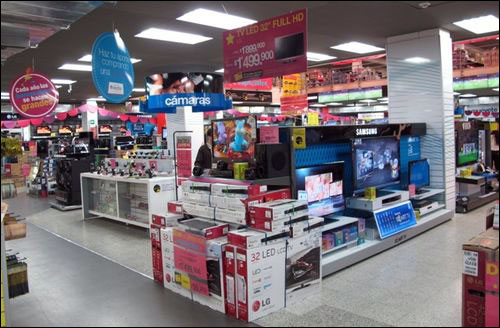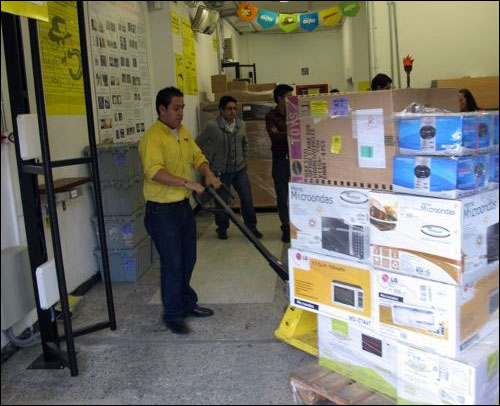Last December, RFID Journal reported that Grupo Éxito, one of the largest retail chains in Colombia, had launched a major pilot involving the placement of EPC Gen 2 passive ultrahigh-frequency (UHF) RFID tags on every item at a new electronics store, known as Éxito Techno. The project was an innovative effort to determine if radio frequency identification could improve the traceability of products moving through the supply chain, while also reducing the incidence of shrinkage, by tracking items from distribution center to point of sale (see Grupo Éxito Launches Major Electronics Tagging Pilot). Last week, the chain released the results of that pilot at RFID Report 2012, an event hosted by supply chain services firm LOGyCA.
Luis Fernando Castañeda, Grupo Éxito’s head of loss prevention, told an audience in Bogotá, that the project’s goal was to evaluate whether RFID could provide visibility of individual items from distribution center to point of sale, as well as support business processes at the DC “and positively impact the entire supply chain cycle, including shipping and receiving, inventory control and security.”

More than 90,000 passive EPC Gen 2 UHF tags were employed throughout the three-month process. During this period, read reliability at the point of dispatch within the DC rose to 100 percent on most products, including non-electronic goods, such as stationery, toys and sports equipment. Read reliability when receiving merchandise at the back of the store was 100 percent on most goods, but for furniture, audiovisual equipment and some electronics, read rates ranged from 97.2 percent to 99.6 percent. This, the company notes, was principally due to the technical limitations of the small tags used for the smaller items, as well as some operational issues within the DC.
Read rates when performing inventory counts within the store ranged from 61 percent to 74 percent on sporting goods during the first month. “We found that we couldn’t always read tags we put in boxes,” Castañeda says. “Later, we put the tags on the boxes and read rates went up.”
Read rates within the store rose during the pilot. In January 2012—the final month of the trial period—rates ranged from 89 percent for party goods to 99 percent for hardware.
For the same mix of items at Grupo Éxito’s other stores, where merchandise is not RFID-tagged, inventory levels had to be adjusted downward (due to goods being lost or stolen) by US$45,867. On products containing RFID tags, adjustments were just US$18,834—a 60 percent reduction in losses.

The pilot also showed a 76 percent reduction in labor costs associated with receiving goods at the store, as well as a 93 percent decrease in the cost of conducting inventory counts on 250 selected items.
“We’ve seen that this technology works,” Castañeda states. “Economically, it is viable, but we have to work with our suppliers so that they put the [RFID] labels on the products. RFID has incredible potential, but we need to work together.”

